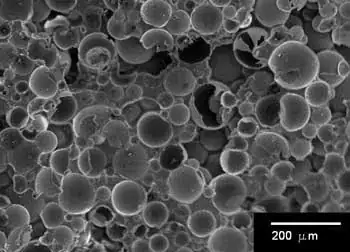I want to paint my ABS parts. But I foresee a problem that will arise from 0.16mm layer - those layers will be perfectly visible, even with primer. Sanding them wouldn't be a good idea, because walls are just 0.8-1mm thick, and probably acetone bath isn't right thing too. I want to use some sort of cement or paste, and cover parts with it using some paint scraper or knife before painting. Do cements suitable for this task exist? Would they stick to ABS?
-
Why are you printing such thick layers? Can you re-print at, say, 0.08 mm? – Carl Witthoft Nov 14 '17 at 13:49
-
Those parts took more than 50 hours even with 0.16mm layers. Using thinner layers was out of question. I think I can make them look like 0.08 or better significantly faster. – A.C. Nov 15 '17 at 14:38
-
Make walls thicker or just get some really (really) fine sandpaper to get rid of what is excess material anyhow. – Valmond Nov 16 '17 at 13:35
2 Answers
Some quick research shows me that ABS can be slightly affected by the composition of polyester resin. Automotive body repair filler, commonly called Bondo (brand name) is mostly polyester resin. I've found in my reading that some consider the "slightly affected" aspect to mean that it adheres well, others believe that the material will weaken and damage the ABS.
You could, of course, purchase some body filler and perform tests. It sands well and would certainly remove the layer lines.
If you determine that such material is not a good solution or would rather not take the gamble or perform the tests, you have an option with another product called microballoons or microspheres. It is a product that has an accurate description. The material is hollow spheres of glass of such tiny dimensions that they will blow away if you breathe on them.
The primary purpose of this product is to fill gaps, create fillets and similar structures without adding appreciable weight. One would use them with thin epoxy resin and mix to desired consistency. Some descriptions include "mayonnaise or peanut butter" depending on the application.
With both of these products, easily sanded is also in the description, although your choice of epoxy will also contribute to that aspect. Because the microballoons are mostly air, they do sand quite cleanly when mixed to heavy or thick consistency.
- 10,532
- 1
- 10
- 24
Consider these moments:
- You can sand primer coating. Every layer adds about 0.1-0.2mm, and somewhat levels the surface by itself because surface tension forces primer to fill cavities more. Primers can be sanded after thorough drying and are guaranteed to stick to plastic if applicable for that sort of plastic. Though, with transparent primers it's hard to tell whether your surface is smooth even after sanding.
- Acetone vapor won't bend thin walls if applied shortly, but will make surface sticky. If you apply powder coats (say, cement) right after acetone vapor treatment, then it will create really good base for paint, primer, or basically any coating, because the powder will be embedded into surface. Clear ABS surface is quite tricky to paint, but if you contaminate it a bit, you might end up with better results.
Hope this helps.
- 355
- 1
- 5
